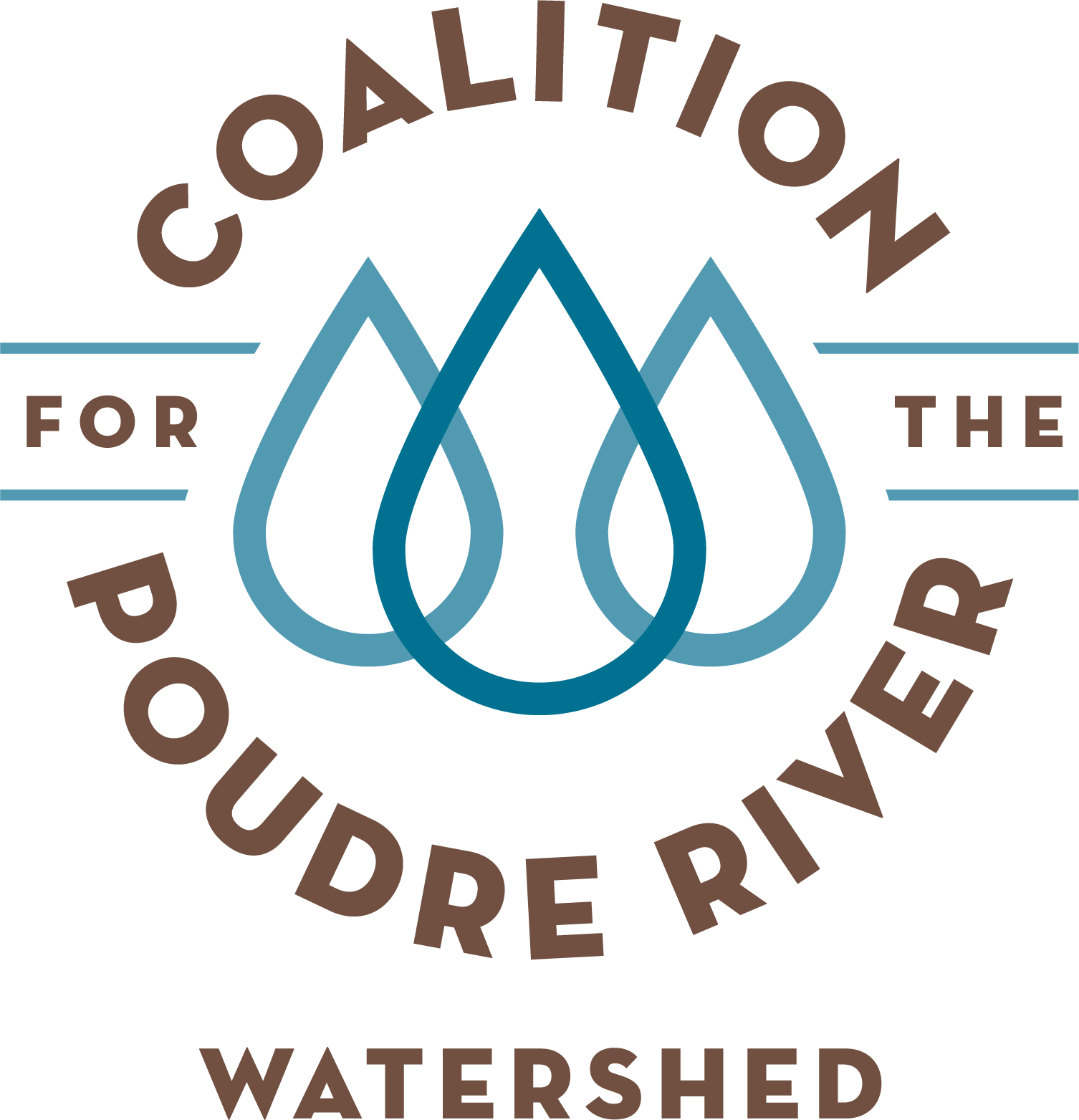Guest Blog: High rate of seedling survival exceeds expectations
New update on trees planted in the Cameron Peak and High Park burn scars
By Catherine Schloegel and Audrey Wheeler, The Nature Conservancy
Planting trees is expensive, from purchasing seedlings to the people-power required for planting, but it is critically important to help forests recover from wildfires. Our forests capture and store water for communities like Fort Collins and Loveland, provide habitat for iconic wildlife such as black bear and elk, and are places where people love to hike, bike, and camp. But tree planting is also a risky business with high rates of seedling mortality.
Catherine Schloegel, Watershed Forest Manager with the Nature Conservancy, and Amy Williams, a rancher in the Cameron Peak burn area, monitor seedlings planted within the Cache la Poudre River Watershed. (Photo credit: Lucas Bolan)
The Cameron Peak Reforestation Group (CPRG) works collaboratively to reforest native conifers in Larimer County burn scars, including the Cameron Peak (2020) and High Park (2012) wildfires. We currently focus our efforts on ponderosa pine, a widespread tree species resistant to low-severity wildfire. In areas unlikely to recover on their own, we are working with private landowners to reforest.
To safeguard our investments in tree planting, we are focusing on increasing survival rates. Reported survival rates for ponderosa pine in burn scars vary widely across the southwestern United States, ranging from 20 to 61% after the third growing season. High summer temperatures can cause death for young trees with small, developing root systems.
We monitor seedling survival and growth to understand how climate conditions and site selection impact survival. Many factors—climatic, topographic, and biotic—influence the survival of seedlings once they’re in the ground. Some of these factors can be addressed through selecting sites carefully to take advantage of cooler, wetter growing environments.
To help new seedlings adapt to Colorado’s current and future climate, we select planting sites with current and future predicted climatic suitability for ponderosa pine, using the Southern Rockies Reforestation Tool.
When possible, we select planting areas on north-facing aspects, which increased survival rates by 37% in other Colorado-based studies.
We encourage people planting seedlings to place them on the north to northeast side of objects (such as dead trees, stumps, or rocks) for shade and to create small depressions in the ground around each tree to catch runoff from rain or snow.
Between 2021 and 2023, we planted 434 acres of private land with native ponderosa pine trees. We installed 12 monitoring plots to measure growth and survival of 300 seedlings. After the first growing season, across the sites, the average survival rate was 84%, ranging from 48% to 100% at different sites.
Photo credit: Lucas Boland
Photo credit: Lucas Boland
Seedlings planted on north-facing aspects under shade had a marginally higher probability of survival than those planted on other aspects and without shade, but we need more data to corroborate this effect. We have seen some dieback, mostly due to drought and heat stress, as well as some new growth, with an average of 2-3 cm of height after one growing season.
An 84% survival rate following the first growing season is very good. We expect additional mortality to occur 2-5 years post-planting, when the seedlings are smallest and their root systems are most susceptible to hot, dry summer temperatures. However, we are hopeful that this learning that has occurred throughout the past two years from these and other tree-planting projects will contribute to higher survival rates into the future.
For now, the signals are clear: continue to use climate scenarios to select suitable sites, maintain a focus on good planting practices, and use monitoring for real-time learning and to inform adjustments. By studying tree mortality in these projects, we continue to strive toward improvement and learn lessons that will benefit tree planting efforts across Colorado.
Who We Are
The Cameron Peak Reforestation Group (CPRG) formed in response to the Cameron Peak fire, the largest fire in Colorado history. The fire burned more than 200,000 acres in northern Colorado in 2020, and more than half of that area burned at high severity. The CPRG works collaboratively to bring resources to help landowners recover and reforest following the Cameron Peak and High Park fires. This collaboration includes:
The CPRG collaborates to raise fund for purchasing trees, planning, and hiring tree-planting crews. We integrate the best-available science into planning and monitoring for an adaptive approach to understand where to focus our efforts, measure the impacts of our projects, and adjust our approach over time.



